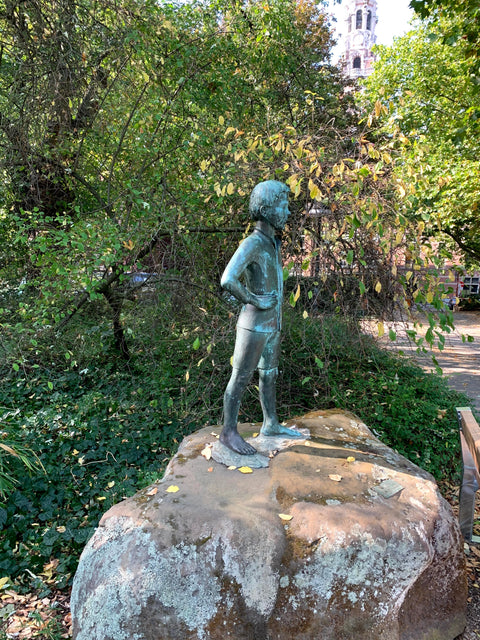The Story of De Witte
The character Louis Verheyden, nicknamed De Witte, comes from the famous novel De Witte by Ernest Claes. Set in Zichem in 1901, the novel reflects a time when socialism was on the rise and small farmers in the Belgian Kempen struggled to survive.
Louis, a mischievous boy, is a poor student who spends more time playing pranks than studying. His strict father eventually sends him to work for the harsh farmer Coene to help the family earn extra income. Yet even there, Louis cannot resist mischief. His discovery of Hendrik Conscience’s The Lion of Flanders opens a door to imagination, allowing him to escape the hardships of early 20th-century rural life.
The Bronze Statue
The statue of De Witte portrays him as a barefoot rascal with his hands on his hips, gazing quizzically at Leuven’s Faculty of Arts—a building full of books and learning. It symbolizes both his mischievous side and his dreams of becoming someone, reflecting a boy full of self-confidence and ambition. The small bronze statue stands on a block of Hageland iron sandstone, rooting it firmly in the region’s heritage.
Unveiling in 1985
Nearly 80 years after Ernest Claes began his studies in Germanic philology at KU Leuven in 1906, and 65 years after De Witte was first published, the Faculty of Arts organized an exhibition about the author. During the opening on 14 May 1985, the statue of De Witte was unveiled by Rector Piet De Somer and Jan Van Hemelrijck, chairman of the Ernest Claes Society. Originally intended for Claes’ home region, the statue was ultimately donated to KU Leuven by the Ernest Claes Society, giving it a meaningful place in Leuven.
(Source: Leuven Gebeiteld_metkaft - Leuven statues.pdf, 2014 ),
photo by Aslı Tezcan



